Lin Li, Angel Hernandez, Ryan Grevsmuehl, Yu-Ting Kou, Shang Song. Engineering 3D-printed standalone conductive nerve guides using soft bioinks for peripheral nerve injuries. Materials Advances (2026)
Conductive nerve guides (CNGs) demonstrate significant regenerative capabilities for bridging critically sized nerve defects due to their unique electrical and mechanical characteristics. However, nerve guides fabricated from conducting polymers through conventional electrochemical methods present challenges, including non-biodegradability and limited customization potential. Here we demonstrate customizable 3D-printed CNGs fabricated using biocompatible bioinks composed of poly(3,4-ethylenedioxythiophene):polystyrene sulfonate (PEDOT:PSS) and polyvinyl alcohol (PVA) without the need for sacrificial support. The synthesized soft bioinks composed of PEDOT:PSS/20% PVA showed enhanced conductivity, wettability, and shear-thinning behavior. By tailoring the polymer concentration and polymerization conditions, the standalone CNGs, fabricated using extrusion-based 3D printing, were custom-made to match the dimensions of critically sized nerve defects in rodent PNI models. The elimination of sacrificial layers during 3D printing avoids complex post-processing material removal and potential residue-related cytotoxicity. As a result, the 3D-printed CNGs demonstrated excellent biodegradability and biocompatibility. Optimizing soft bioink properties offers a simple manufacturing approach for producing 3D-printed biodegradable and biocompatible CNGs with customizable dimensions. Our findings address the critical need for advanced nerve guide designs tailored to treat peripheral nerve injuries of varying defect sizes.

Jindi Sun, Shang Song. Advances in modeling permeability and selectivity of the blood-brain barrier using microfluidics. Microfluidics and Nanofluidics (2024)
The blood-brain barrier (BBB) protects the brain by actively allowing the entry of ions and nutrients while limiting the passage of from toxins and pathogens. A healthy BBB has low permeability and high selectivity to maintain normal brain functions. Increased BBB permeability can result from neurological diseases and traumatic injuries. Modern engineering technologies such as microfluidics and fabrication techniques have advanced the development of BBB models to simulate the basic functions of BBB. However, the intrinsic BBB properties are difficult to replicate. Existing in vitro BBB models demonstrate inconsistent BBB permeability and selectivity due to variations in microfluidic design, cell types and arrangement, expression of tight junction (TJ) proteins, and use of shear stress. Specifically, microfluidic designs have flow channels of different sizes, complexity, topology, and modular structure. Different cell types are selected to mimic various physiological conditions. These factors make it challenging to compare results obtained using different experimental setups. This paper highlights key factors that play important roles in influencing microfluidic models and discusses how these factors contribute to permeability and selectivity of the BBB models.
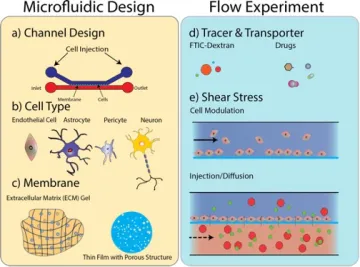
Shang Song, Kelly W McConnell, Dingying Shan, Cheng Chen, Byeongtaek Oh, Jindi Sun, Ada Poon, Paul George. Conductive gradient hydrogels allow spatial control of adult stem cell fate. Journal of Materials Chemistry B (2024)
Electrical gradients are fundamental to physiological processes including cell migration, tissue formation, organ development, and response to injury and regeneration. Current electrical modulation of cells is primarily studied under a uniform electrical field. Here we demonstrate the fabrication of conductive gradient hydrogels (CGGs) that display mechanical properties and varying local electrical gradients mimicking physiological conditions. Our study demonstrate that electrical gradient enables spatial control of stem cell fate.
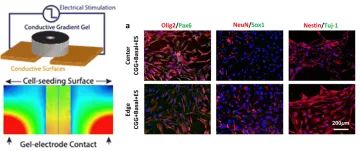
Madelyn Reynolds, Lindsay M Stoy, Jindi Sun, Prince Emmanuel Opoku Amponsah, Lin Li, Misael Soto, Shang Song. Fabrication of Sodium Trimetaphosphate-Based PEDOT: PSS Conductive Hydrogels Gels (2024)
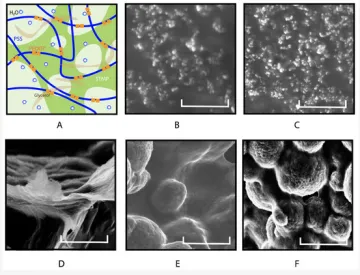
Suleyman A Omer, Kaitlyn H McKnight, Lucas I Young, Shang Song. Stimulation strategies for electrical and magnetic modulation of cells and tissues Cell Regeneration (2023)
Electrical phenomena play an important role in numerous biological processes including cellular signaling, early embryogenesis, tissue repair and remodeling, and growth of organisms. Electrical and magnetic effects have been studied on a variety of stimulation strategies and cell types regarding cellular functions and disease treatments. In this review, we discuss recent advances in using three different stimulation strategies, namely electrical stimulation via conductive and piezoelectric materials as well as magnetic stimulation via magnetic materials, to modulate cell and tissue properties. These three strategies offer distinct stimulation routes given specific material characteristics. This review will evaluate material properties and biological response for these stimulation strategies with respect to their potential applications in neural and musculoskeletal research.
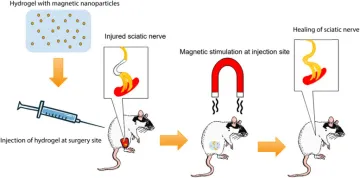
Sruthi Santhanam, Vivian R Feig, Kelly W McConnell, Shang Song, Emily E Gardner, Jainith J Patel, Dingying Shan, Zhenan Bao, Paul M George. Controlling the Stem Cell Environment Via Conducting Polymer Hydrogels to Enhance Therapeutic Potential Advanced Materials Technologies (2023)
Stem cells are a promising treatment option for various neurological diseases such as stroke, spinal cord injury, and other neurodegenerative disorders. However, the ideal environment to optimize the therapeutic potential of the cells remains poorly understood. Stem cells in the native environment are influenced by a combination of mechanical, chemical, and electrical cues for proliferation and differentiation. Because of their controllable properties, conductive hydrogels are promising biomaterials to interact with stem cells. Here, this work develops an interpenetrating conducting polymer hydrogel with tunable mechanical properties. The hydrogel serves as a platform to...
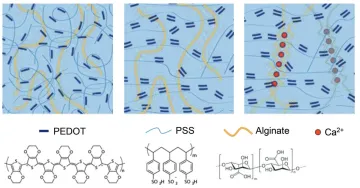
Byeongtaek Oh, Sruthi Santhanam, Matine Azadian, Vishal Swaminathan, Alex G Lee, Kelly W McConnell, Alexa Levinson, Shang Song, Jainith J Patel, Emily E Gardner, Paul M George. Electrical modulation of transplanted stem cells improves functional recovery in a rodent model of stroke Nature Communications (2022)
Stroke is a leading cause of long-term disability worldwide, intensifying the need for effective recovery therapies. Stem cells are a promising stroke therapeutic, but creating ideal conditions for treatment is essential. Here we developed a conductive polymer system for stem cell delivery and electrical modulation in animals. Using this system, electrical modulation of human stem cell transplants improve functional stroke recovery in rodents. Increased endogenous stem cell production corresponds with improved function. Transcriptome analysis identified stanniocalcin 2 (STC2) as one of the genes most significantly upregulated by electrical stimulation. Lentiviral upregulation and downregulation of STC2 in the transplanted stem cells demonstrate that this glycoprotein is an essential mediator in the functional improvements seen with electrical modulation. Moreover, intraventricular administration of recombinant STC2 …
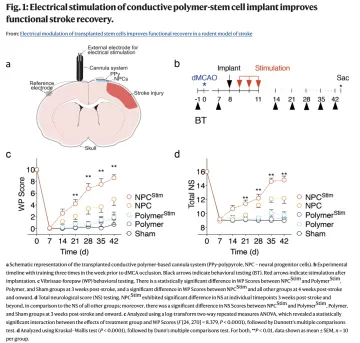
Shang Song, Kelly W McConnell, Danielle Amores, Alexa Levinson, Hannes Vogel, Marco Quarta, Thomas A Rando, Paul M George. Electrical stimulation of human neural stem cells via conductive polymer nerve guides enhances peripheral nerve recovery Biomaterials (2021)
Severe peripheral nerve injuries often result in permanent loss of function of the affected limb. Current treatments are limited by their efficacy in supporting nerve regeneration and behavioral recovery. Here we demonstrate that electrical stimulation through conductive nerve guides (CNGs) enhances the efficacy of human neural progenitor cells (hNPCs) in treating a sciatic nerve transection in rats. Electrical stimulation strengthened the therapeutic potential of NPCs by upregulating gene expression of neurotrophic factors which are critical in augmenting synaptic remodeling, nerve regeneration, and myelination. Electrically-stimulated hNPC-containing CNGs are significantly more effective in improving sensory and motor functions starting at 1–2 weeks after treatment than either treatment alone. Electrophysiology and muscle assessment demonstrated successful re-innervation of the affected target muscles in this …
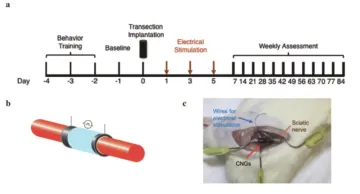
Yuxin Liu*, Jinxing Li*, Shang Song*, Jiheong Kang, Yuchi Tsao, Shucheng Chen, Vittorio Mottini, Kelly McConnell, Wenhui Xu, Yu-Qing Zheng, Jeffrey B-H Tok, Paul M George, Zhenan Bao. Morphing electronics enable neuromodulation in growing tissue. Nature Biotechnology (2020)
Bioelectronics for modulating the nervous system have shown promise in treating neurological diseases 1, 2, 3. However, their fixed dimensions cannot accommodate rapid tissue growth 4, 5 and may impair development 6. For infants, children and adolescents, once implanted devices are outgrown, additional surgeries are often needed for device replacement, leading to repeated interventions and complications 6, 7, 8. Here, we address this limitation with morphing electronics, which adapt to in vivo nerve tissue growth with minimal mechanical constraint. We design and fabricate multilayered morphing electronics, consisting of viscoplastic electrodes and a strain sensor that eliminate the stress at the interface between the electronics and growing tissue. The ability of morphing electronics to self-heal during implantation surgery allows a reconfigurable and seamless neural interface. During the fastest growth period …
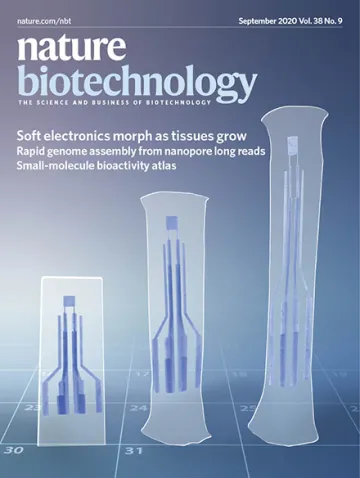
Riley A Suhar, Laura M Marquardt, Shang Song, Hana Buabbas, Vanessa M Doulames, Patrik K Johansson, Katarina C Klett, Ruby E Dewi, Annika MK Enejder, Giles W Plant, Paul M George, Sarah C Heilshorn. Elastin-like Proteins to Support Peripheral Nerve Regeneration in Guidance Conduits. ACS Biomaterials Science & Engineering (2020)
Synthetic nerve guidance conduits (NGCs) offer an alternative to harvested nerve grafts for treating peripheral nerve injury (PNI). NGCs have been made from both naturally derived and synthesized materials. While naturally derived materials typically have an increased capacity for bioactivity, synthesized materials have better material control, including tunability and reproducibility. Protein engineering is an alternative strategy that can bridge the benefits of these two classes of materials by designing cell-responsive materials that are also systematically tunable and consistent. Here, we tested a recombinantly derived elastin-like protein (ELP) hydrogel as an intraluminal filler in a rat sciatic nerve injury model. We demonstrated that ELPs enhance the probability of forming a tissue bridge between the proximal and distal nerve stumps compared to an empty silicone conduit across the length of a 10 mm nerve gap …
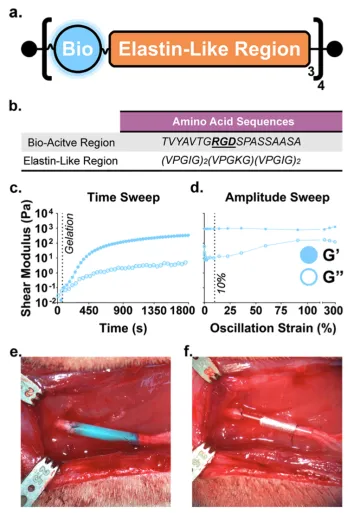
Shang Song, Danielle Amores, Cheng Chen, Kelly McConnell, Byeongtaek Oh, Ada Poon, Paul M George. Controlling properties of human neural progenitor cells using 2D and 3D conductive polymer scaffolds Scientific Reports (2019)
Human induced pluripotent stem cell-derived neural progenitor cells (hNPCs) are a promising cell source for stem cell transplantation to treat neurological diseases such as stroke and peripheral nerve injuries. However, there have been limited studies investigating how the dimensionality of the physical and electrical microenvironment affects hNPC function. In this study, we report the fabrication of two-and three-dimensional (2D and 3D respectively) constructs composed of a conductive polymer to compare the effect of electrical stimulation of hydrogel-immobilized hNPCs. The physical dimension (2D vs 3D) of stimulating platforms alone changed the hNPCs gene expression related to cell proliferation and metabolic pathways. The addition of electrical stimulation was critical in upregulating gene expression of neurotrophic factors that are important in regulating cell survival, synaptic remodeling, and nerve …
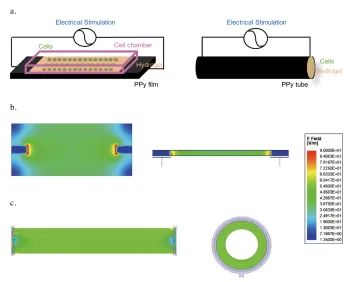
Byeongtaek Oh, Alexa Levinson, Vivek Lam, Shang Song, Paul George. Electrically conductive scaffold to modulate and deliver stem cells. Journal of Visualized Experiments (2018)
Stem cell therapy has emerged as an exciting stroke therapeutic, but the optimal delivery method remains unclear. While the technique of microinjection has been used for decades to deliver stem cells in stroke models, this technique is limited by the lack of ability to manipulate the stem cells prior to injection. This paper details a method of using an electrically conductive polymer scaffold for stem cell delivery. Electrical stimulation of stem cells using a conductive polymer scaffold alters the stem cell's genes involved in cell survival, inflammatory response, and synaptic remodeling. After electrical preconditioning, the stem cells on the scaffold are transplanted intracranially in a distal middle cerebral artery occlusion rat model. This protocol describes a powerful technique to manipulate stem cells via a conductive polymer scaffold and creates a new tool to further develop stem cell-based therapy.
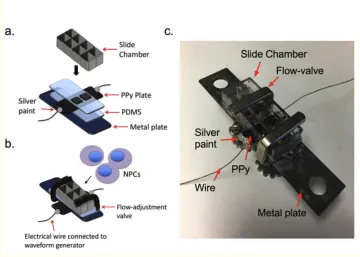
Byeongtaek Oh, Shang Song, Alexa Levinson, Vivek Lam, Paul George. Combining electrical stimulation with stem cell therapy improves endogenous mechanisms of stroke recovery. Stroke (2018)
Brain stimulation techniques to enhance stroke recovery are a promising area of research; however, in vivo electrical stimulation combined with neural progenitor cell (NPC) transplantation has not been fully investigated. We propose the use of a conductive polymer scaffold to optimize stem cell therapy and determine mechanisms driving stroke recovery.
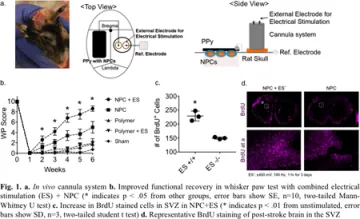
Shang Song, Paul M George. Conductive polymer scaffolds to improve neural recovery. Neural Regeneration Research (2017)
Injuries to the nervous system manifest in various forms ranging from stroke to trauma (ie., motor vehicle accidents, combats) to diabetic neuropathy as well as many other neurological diseases. Nerve regeneration remains a complex biological process that is challenging to address clinically. There is no effective medical treatment for central nervous system repair. For a peripheral injury, the current gold standard for treating critically-sized neve defects (> 10 mm) is to use autologous nerve grafts, which have only shown 80% functional recovery. These grafts have significant drawbacks including the availability of donor source, size of donor nerve, and morbidity and scarring occurring at the donor site. Nerve tissue engineering provides a new alternative to neural recovery. Specifically, biomaterials integrate natural or synthetic biomimetic materials and biological systems to facilitate regeneration of diseased tissues …
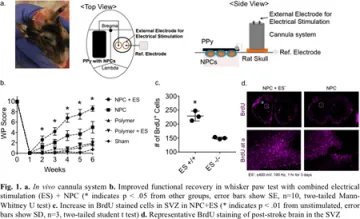
Shang Song, Raymond Yeung, Jaehyun Park, Andrew M Posselt, Tejal A Desai, Qizhi Tang, Shuvo Roy. Glucose-stimulated insulin response of silicon nanopore-immunoprotected islets under convective transport. ACS biomaterials science & engineering (2017)
Major clinical challenges associated with islet transplantation for type 1 diabetes include shortage of donor organs, poor engraftment due to ischemia, and need for immunosuppressive medications. Semipermeable membrane capsules can immunoprotect transplanted islets by blocking passage of the host’s immune components while providing exchange of glucose, insulin, and other small molecules. However, capsules-based diffusive transport often exacerbates ischemic injury to islets by reducing the rate of oxygen and nutrient transport. We previously reported the efficacy of a newly developed semipermeable ultrafiltration membrane, the silicon nanopore membrane (SNM) under convective-driven transport, in limiting the passage of pro-inflammatory cytokines while overcoming the mass transfer limitations associated with diffusion through nanometer-scale pores. In this study, we report that SNM-encapsulated …
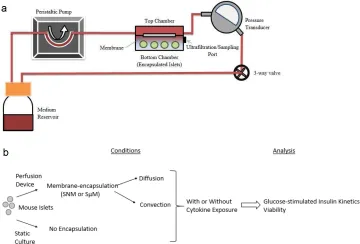
Shang Song, Charles Blaha, Willieford Moses, Jaehyun Park, Nathan Wright, Joey Groszek, William Fissell, Shant Vartanian, Andrew M Posselt, Shuvo Roy. An intravascular bioartificial pancreas device (iBAP) with silicon nanopore membranes (SNM) for islet encapsulation under convective mass transport. Lab on a Chip (2017)
Diffusion-based bioartificial pancreas (BAP) devices are limited by poor islet viability and functionality due to inadequate mass transfer resulting in islet hypoxia and delayed glucose–insulin kinetics. While intravascular ultrafiltration-based BAP devices possess enhanced glucose–insulin kinetics, the polymer membranes used in these devices provide inadequate ultrafiltrate flow rates and result in excessive thrombosis. Here, we report the silicon nanopore membrane (SNM), which exhibits a greater hydraulic permeability and a superior pore size selectivity compared to polymer membranes for use in BAP applications. Specifically, we demonstrate that the SNM-based intravascular BAP with ∼10 and ∼40 nm pore sized membranes support high islet viability (>60%) and functionality (<15 minute insulin response to glucose stimulation) at clinically relevant islet densities (5700 and 11 400 IE per cm2) under …
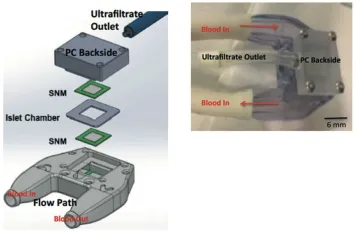
Shang Song, Gaetano Faleo, Raymond Yeung, Rishi Kant, Andrew M Posselt, Tejal A Desai, Qizhi Tang & Shuvo Roy. Silicon nanopore membrane (SNM) for islet encapsulation and immunoisolation under convective transport. Scientific Reports (2016)
Problems associated with islet transplantation for Type 1 Diabetes (T1D) such as shortage of donor cells, use of immunosuppressive drugs remain as major challenges. Immune isolation using encapsulation may circumvent the use of immunosuppressants and prolong the longevity of transplanted islets. The encapsulating membrane must block the passage of host’s immune components while providing sufficient exchange of glucose, insulin and other small molecules. We report the development and characterization of a new generation of semipermeable ultrafiltration membrane, the silicon nanopore membrane (SNM), designed with approximately 7 nm-wide slit-pores to provide middle molecule selectivity by limiting passage of pro-inflammatory cytokines. Moreover, the use of convective transport with a pressure differential across the SNM overcomes the mass transfer limitations associated with diffusion through …
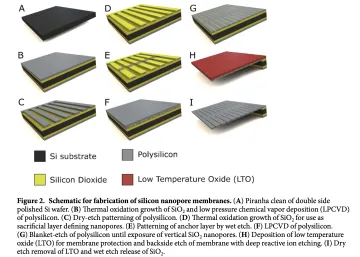
Shang Song, Shuvo Roy. Progress and challenges in macroencapsulation approaches for type 1 diabetes (T1D) treatment: cells, biomaterials, and devices. Biotechnology and Bioengineering (2016)
Macroencapsulation technology has been an attractive topic in the field of treatment for Type 1 diabetes due to mechanical stability, versatility, and retrievability of the macro‐capsule design. Macro‐capsules can be categorized into extravascular and intravascular devices, in which solute transport relies either on diffusion or convection, respectively. Failure of macroencapsulation strategies can be due to limited regenerative capacity of the encased insulin‐producing cells, sub‐optimal performance of encapsulation biomaterials, insufficient immunoisolation, excessive blood thrombosis for vascular perfusion devices, and inadequate modes of mass transfer to support cell viability and function. However, significant technical advancements have been achieved in macroencapsulation technology, namely reducing diffusion distance for oxygen and nutrients, using pro‐angiogenic factors to increase vascularization for …
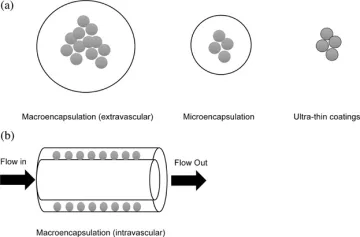
Shang Song, Eun Jung Kim, Chelsea S Bahney, Theodore Miclau, Ralph Marcucio, Shuvo Roy. The synergistic effect of micro-topography and biochemical culture environment to promote angiogenesis and osteogenic differentiation of human mesenchymal stem cells. Acta Biomaterilia (2015)
Critical failures associated with current engineered bone grafts involve insufficient induction of osteogenesis of the implanted cells and lack of vascular integration between graft scaffold and host tissue. This study investigated the combined effects of surface microtextures and biochemical supplements to achieve osteogenic differentiation of human mesenchymal stem cells (hMSCs) and revascularization of the implants in vivo. Cells were cultured on 10 μm micropost-textured polydimethylsiloxane (PDMS) substrates in either proliferative basal medium (BM) or osteogenic medium (OM). In vitro data revealed that cells on microtextured substrates in OM had dense coverage of extracellular matrix, whereas cells in BM displayed more cell spreading and branching. Cells on microtextured substrates in OM demonstrated a higher gene expression of osteoblast-specific markers, namely collagen I, alkaline phosphatase …
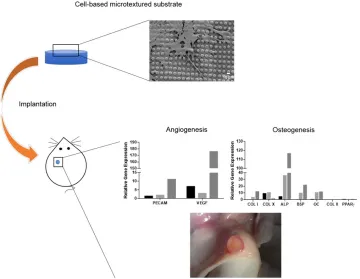
Shang Song, Yupeng Chen, Zhimin Yan, Hicham Fenniri, Thomas J Webster. Self-assembled rosette nanotubes for incorporating hydrophobic drugs in physiological environments. International Journal of Nanomedicine (2011)
Rosette nanotubes (RNTs) are novel, biomimetic, injectable, self-assembled nanomaterials. In previous studies, materials coated with RNTs have significantly increased cell growth (eg, osteoblasts, chondrocytes, and endothelial cells) due to the favorable cellular environment created by RNTs. It has also been suggested that the tubular RNT structures formed by base stacking and hydrophobic interactions can be used for drug delivery, and this possibility has not been studied to date. Here we investigated methods to load and deliver tamoxifen (TAM, a hydrophobic anticancer drug) using two different types of RNTs: single-base RNTs and twin-base RNTs. Drug-loaded RNTs were characterized by nuclear magnetic resonance spectroscopy, diffusion-ordered nuclear magnetic resonance spectroscopy (DOSY NMR), and ultraviolet-visible (UV-Vis) spectroscopy at different ratios of twin-base RNTs to TAM. The results …
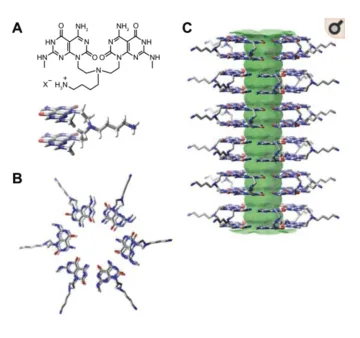
Yupeng Chen, Shang Song, Zhimin Yan, Hicham Fenniri, Thomas J Webster. Self-assembled rosette nanotubes encapsulate and slowly release dexamethasone. International Journal of Nanomedicine (2011)
Rosette nanotubes (RNTs) are novel, self-assembled, biomimetic, synthetic drug delivery materials suitable for numerous medical applications. Because of their amphiphilic character and hollow architecture, RNTs can be used to encapsulate and deliver hydrophobic drugs otherwise difficult to deliver in biological systems. Another advantage of using RNTs for drug delivery is their biocompatibility, low cytotoxicity, and their ability to engender a favorable, biologically-inspired environment for cell adhesion and growth. In this study, a method to incorporate dexamethasone (DEX, an inflammatory and a bone growth promoting steroid) into RNTs was developed. The drug-loaded RNTs were characterized using diffusion ordered nuclear magnetic resonance spectroscopy (DOSY NMR) and UV-Vis spectroscopy. Results showed for the first time that DEX can be easily and quickly encapsulated into RNTs and released to …
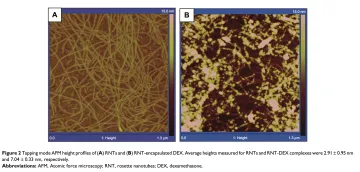
Christopher J Ward, Shang Song, Edward W Davis. Controlled release of tetracycline–HCl from halloysite–polymer composite films. Journal of nanoscience and nanotechnology (2010)
The first direct comparison between two common methods for loading halloysite with a small molecule for controlled release is presented. While the methods differ in the degree of simplicity, they provide essentially the same level of loading and release kinetics. A tentative explanation of the...

